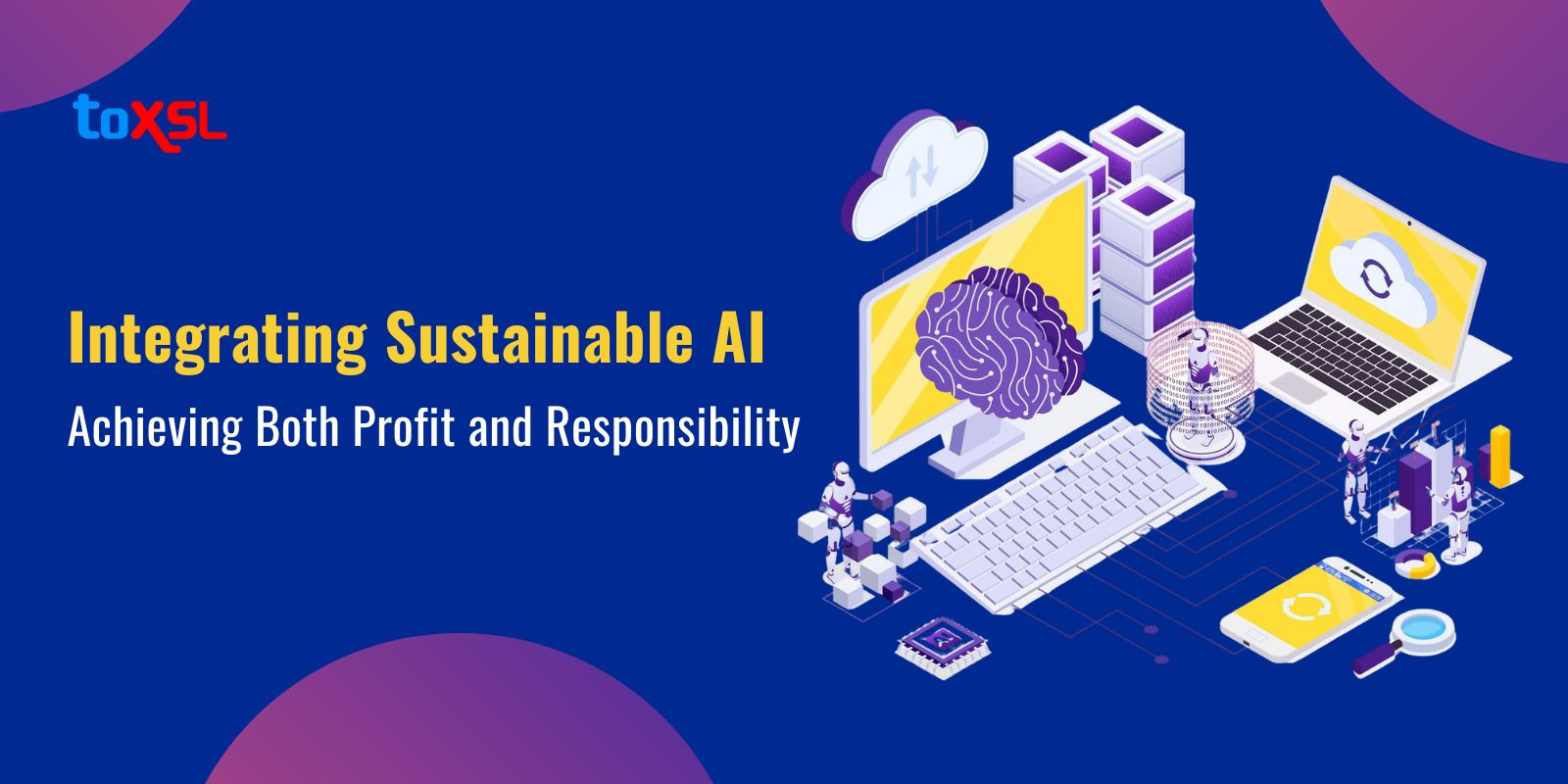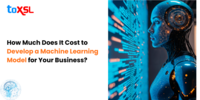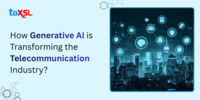- Apr 16, 2025
Share this post on:

AI is expected to add $25.6 trillion to the world’s economy. Right now, the world’s AI market is valued at over $390 billion. Artificial Intelligence (AI) is revolutionizing businesses by driving efficiency, innovation, and growth. However, as the world faces pressing environmental and social challenges, businesses are aligning their technological advancements with sustainable practices. The integration of sustainable AI offers a pathway to achieving both profitability and responsibility.
Artificial Intelligence promises numerous innovations and efficiency across various industry verticals. However, with the rise in technology, businesses must focus on its environmental and societal impact. You might have heard about the “AI apocalypse” narrative, and it is often exaggerated, but now with the advancements in AI, it seems like a serious concern about the environment.
Looking at AI’s trajectory, if we do not keep an eye, it can lead to unsustainable resource consumption, bias amplification, and job displacement. However, the good news is that we have sustainable AI, and it has become a necessity in today’s AI world. But why is that so? Well, it is about consciously designing, developing, and deploying AI systems that maximize benefit while minimizing harm, helping businesses achieve profit while taking responsibility.
What is Sustainable AI?
Sustainable AI means developing and using artificial intelligence (AI) in ways that are environmentally, socially, and ethically responsible. It focuses on reducing the negative impacts of AI while focusing on their long-term viability and positive contributions to society.
Benefits of Sustainable AI
Artificial Intelligence has numerous untapped potentials that businesses might miss sometimes. So, in this section, we will help you understand the various potentials that sustainable AI can offer. Sustainable AI is not just about making AI “greener”. It is about aligning AI development with ethical principles, societal well-being, and environmental responsibility.
Energy Efficiency: Sustainable AI reduces energy consumption by optimizing AI models and hardware. Techniques like sparse modeling permit AI systems to perform with much less data and computing power, minimizing their environmental impact. This allows a decrease in carbon emissions and makes AI technology extra green without sacrificing its performance.
Resource Management: AI-driven precision agriculture optimizes farming practices, lowering water utilization and pesticide dependency at the same time as growing crop yields. Additionally, AI enhances waste control by automating recycling processes, identifying inefficiencies, and conserving resources to lessen environmental pollution.
Wildlife Conservation: AI monitors endangered species and tracks deforestation using satellite imagery and drones. This technology assists protect biodiversity by figuring out threats to ecosystems early on and permitting focused conservation efforts.
Disaster Preparedness: AI provides early warnings for natural disasters like floods and hurricanes through analyzing climate data. It strengthens infrastructure resilience and allows communities to prepare effectively, saving lives and minimizing harm to essential assets.
Job Creation: AI platforms examine labor market trends to match individuals with suitable job opportunities based on their talents and experience. This reduces unemployment quotes and helps social equity by providing better access to employment.
Ethical Development: Sustainable AI promotes fairness through adhering to ethical standards in its design and deployment. It guarantees transparency, avoids biases, and aligns with accountable practices to benefit all stakeholders without exacerbating inequalities.
Cost Reduction: Businesses use sustainable AI to optimize operations, which includes supply chains and logistics, which lowers costs while reducing waste. By automating methods efficiently, organizations can attain economic savings along with environmental benefits.
Eco-Friendly Product Design: AI enables the design of environmentally friendly products that can be recyclable or biodegradable, decreasing their life-cycle impact. This helps sustainability goals by minimizing waste from production to disposal.
Managing AI’s Impact: Sustainable AI addresses its environmental footprint by decreasing energy demands during model training and using renewable energy sources for infrastructure. It guarantees that AI technology is powerful and environmentally accountable.
Sustainable AI Practices
More and more AI applications are being made to help with environmental problems. These include projects to track carbon emissions, find areas that are vulnerable to climate change, make supply chains more sustainable, and use precise farming methods to reduce water use and prevent soil damage.
Here are some examples of these applications:
Predicting Extreme Weather: Predicting the weather is hard, especially for big storms and heatwaves. AI helps forecasters make better predictions. For example, Google's GraphCast modelcan predict where big storms will go and identify risks of floods and extreme temperatures.
Tracking Greenhouse Gas Emissions: Many things people do release gases that contribute to climate change. It's important to know where and how much these gases are released to make good policies. AI helps track these emissions more accurately. For instance, Climate TRACE uses AI and satellite pictures to monitor emissions very precisely.
Improving Power Grids: Using clean energy like solar and wind power is good, but it can be unpredictable because it depends on the weather. AI helps manage this by predicting how much energy will be needed and balancing supply with demand. It finds the best way to distribute energy efficiently.
Finding New Materials: Solar panels and wind turbines need special materials to work well. Finding new materials is important for making these technologies better. AI is helping discover new materials faster. For example, Google's AI model GNoME has found many new crystals that could help make better batteries for electric cars or more efficient computers.
Future of Sustainable AI
So, what will be the future of sustainable AI? In this section, we will shed some light on the future of sustainable AI.
Trends in Green AI: Research about how AI impacts the surroundings is becoming more important very quickly. New data and developing public worries will push agencies that use AI to make their models more environmentally friendly and aid a greener AI plan. Innovation is crucial for making AI more efficient. We are simply starting the AI revolution, and there is lots of room for improvement. However, as we stated earlier, the AI industry can't develop without thinking about the ethical effects of this technology.
Policy and Regulation: If the AI industry does not decide to sturdy and obligatory movements to sell sustainable practices, governments and regulators can step in to inspire green AI development. This is already happening in the European Union. The recently approved EU AI Act indicates developing voluntary requirements for AI businesses to lower power use and other resource consumption throughout the lifecycle of high-hazard AI systems.
Key Trends Shaping the Future of Sustainable AI
Many exciting trends are helping make AI more environmentally friendly. Here are some of the most important ones:
Neuromorphic Computing: This type of computing copies how the human brain works, which uses less energy. Companies like Intel and IBM are making these special chips.
Approximate Computing: This method allows for small mistakes in calculations to save energy. It might seem strange, but many applications can still work well even with these small errors.
Edge AI: Instead of sending data to big servers, AI processes data right where it's created, like on smartphones or smart devices. This saves energy and reduces the need for internet bandwidth.
Federated Learning: This technique trains AI models using data from different places without sharing the actual data. It helps keep data private and reduces the need for large data centers.
Green Data Centers: Data centers that power AI are using renewable energy, better cooling systems, and optimized servers to reduce their carbon footprint. Liquid cooling is one of the latest improvements.
Efficient Algorithms: Researchers are creating smarter algorithms that need fewer resources but still work accurately. Examples include sparse models and knowledge distillation.
Quantum AI (For the Future): Quantum computing could make AI faster and use less energy, but it's still in the early stages and needs more breakthroughs.
Using Smaller AI Models: Not every task needs a big, complex AI system. Using smaller models for specific tasks can save a lot of energy while still being effective.
Conclusion:
Sustainable AI is changing how businesses use Artificial Intelligence. If we start looking closely at the environment and understand it, more businesses will understand how important it is to incorporate Sustainable AI in business. Embracing AI is a strategic move that is crucial for businesses, governments, and individuals to pave the way to a future where AI serves humanity and protects our planet.
ToXSL Technologies is a top-tier Artificial Intelligence services provider company. Our Artificial Intelligence solutions have helped numerous businesses expand and enhance their revenue. Being a leading AI solution provider our AI developers ensure that they deliver the best solution possible as per your business requirements. Contact us and leverage our AI services today.
FAQs
1. What is sustainable AI?
Sustainable AI focuses on developing artificial intelligence systems that are environmentally friendly, socially responsible, and economically viable. It prioritizes energy efficiency, ethical data usage, and inclusivity while maximizing business benefits.
2. How can sustainable AI benefit businesses?
Sustainable AI enhances operational efficiency, reduces costs, and boosts brand reputation. By focusing on ethical practices and energy-saving technologies, businesses can gain a competitive edge while minimizing their environmental footprint.
3. What are the challenges of integrating sustainable AI?
Integrating sustainable AI can be challenging due to the complexity of balancing profit with ethical considerations. Businesses must ensure responsible data usage, mitigate biases, and invest in energy-efficient infrastructure, all while maintaining profitability.
4. How can companies ensure responsible AI usage?
To ensure responsible AI usage, companies should establish clear ethical guidelines, invest in bias-free algorithms, prioritize transparency, and ensure that AI models comply with environmental sustainability standards and regulations.












